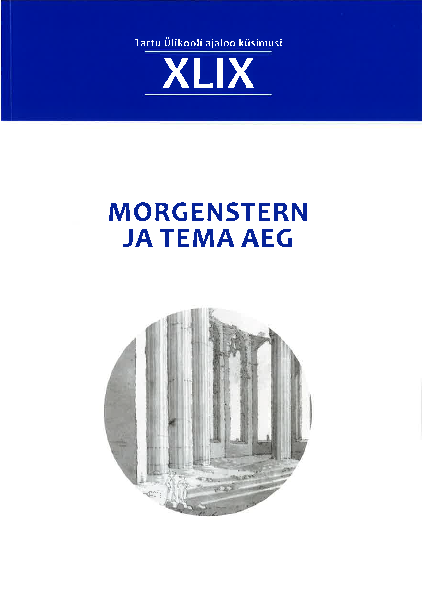Karl Morgensterni aegne kunstimuuseum ülikooli peahoones
Karl Morgenstern's Art Museum in the Main Building of the University of Tartu
DOI:
https://doi.org/10.15157/tyak.vi49.18383Abstract
In 2020, the University of Tartu celebrated the 250th anniversary of
the birth of Johann Karl Simon Karl Morgenstern, the first director
of the University of Tartu/Dorpat Art Museum, which was founded
in 1803. At first, the museum was housed in Morgenstern’s apartment
at Town Hall Square, but in 1809 it was relocated to the newly
erected main building of the university, to two rooms facing onto the
street and next to the assembly hall. In 1839, Morgenstern drew up
an inventory list for the museum. While the document adds little new
knowledge about the history of the museum, it is important in helping
us remember that the art museum has not always looked like
it does today, complete with a colourful interior with Pompeii-style
murals and white plaster copies of classical sculptures. Compared to
the transforming and evolving museum spaces all over the world, the
University of Tartu Art Museum has remained relatively unchanged
over the past 150 years, but before that, the museum had a completely
different appearance. The keywords describing the museum’s
interior and collections in the first half of the 19th century are engravings
and cabinets containing large prints as well as collections of
coins and plaster casts of coins and gems packed in boxes, complemented
by colourful ancient vases and Egyptian antiquities, as well
as two mummies. The furniture from that time is still used in the museum.
Some of the atmosphere of the Morgenstern-era art museum
was brought back to life with the exhibition Morgenstern 250. The
Enchanting Art of Glyptics, which was available to the public from
June 2020 to March 2021.

